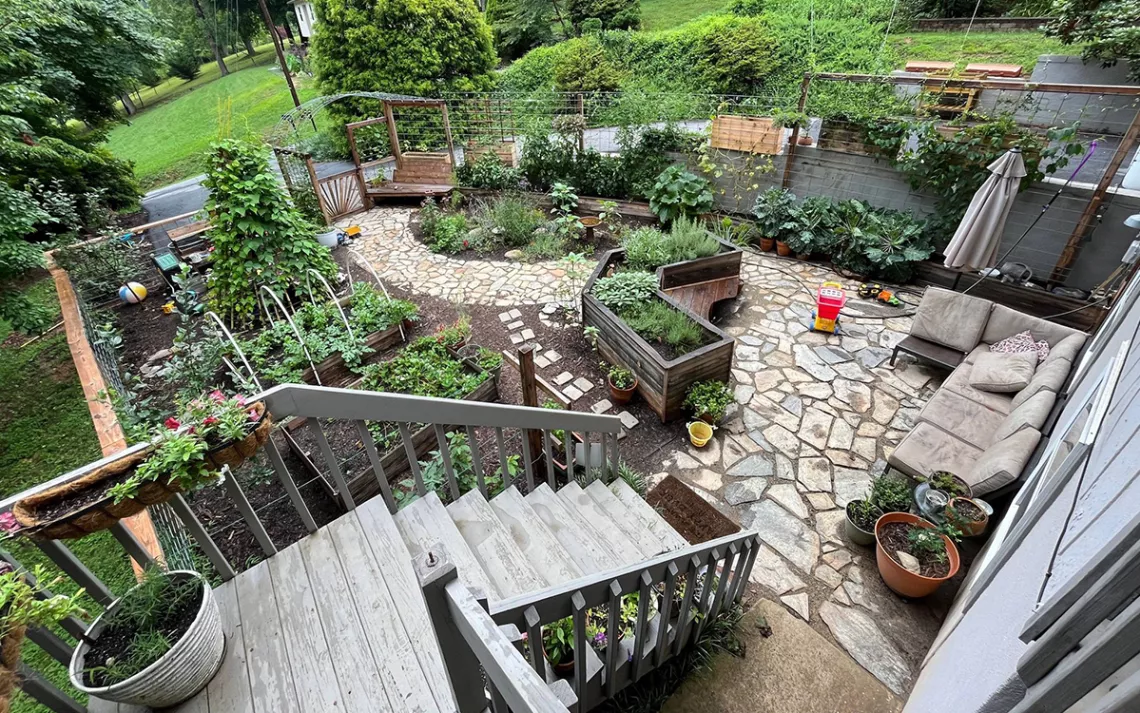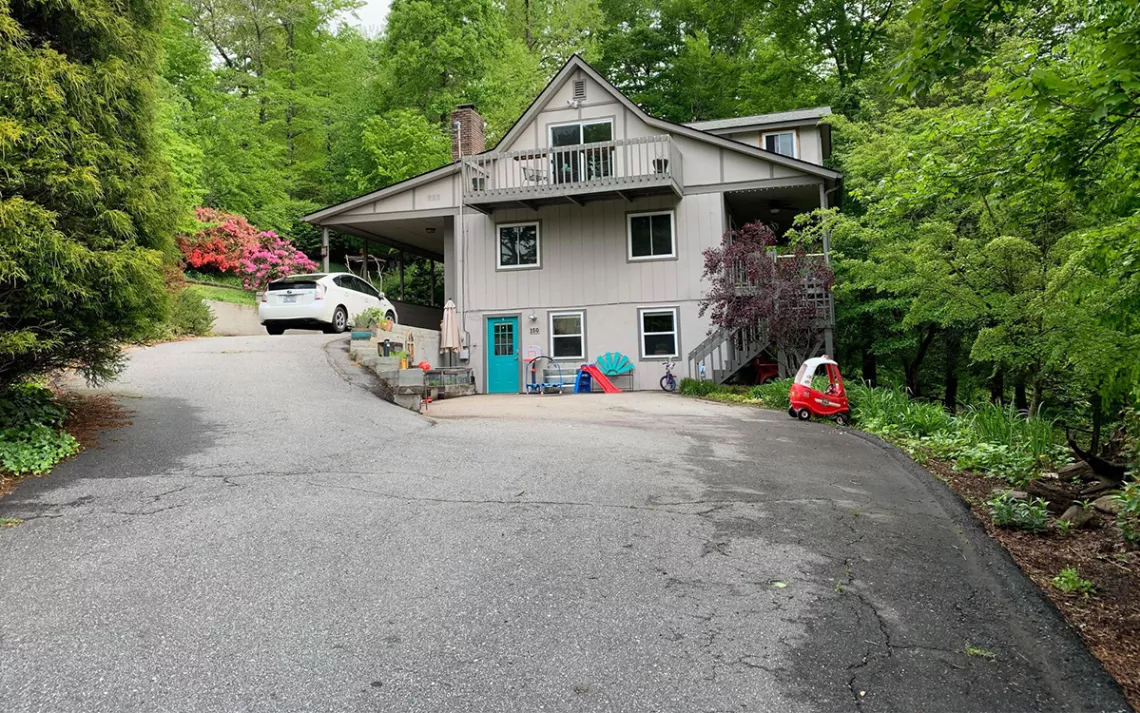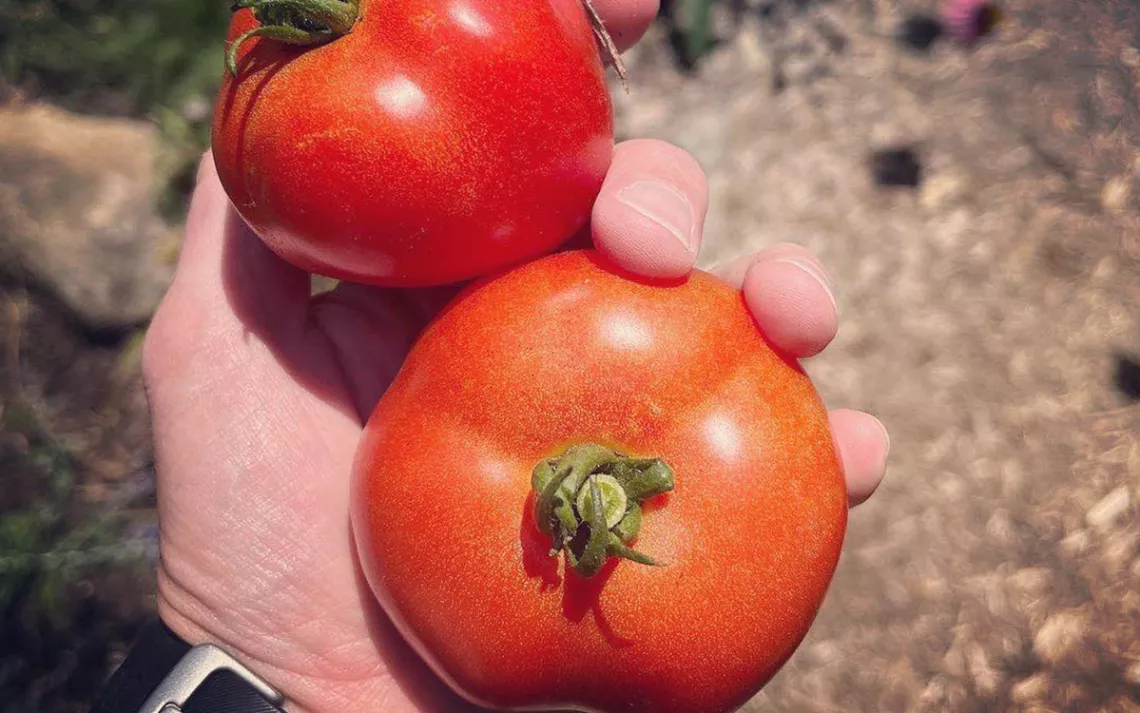How—and Why—to Depave Your Driveway
It makes for a surprisingly easy, greening Earth Month project

A finished view of the author's depaved driveway garden.
|Photos by Kim Dinan
It was around the fifth month of the pandemic that I began eyeing my driveway. Like so many others in those never-ending days of 2020, I’d spent more time than I ever imagined confined to my house, struggling with the daily demands of living, working, and parenting within the same four walls.
I wanted a tropical vacation and a live-in nanny. But I needed to sink my hands in the dirt—to ground myself. I longed to plant a garden. My body knew something that my brain didn’t learn until later—dirt’s natural bacteria reduces stress.
The issue with making my garden fantasies a reality was that I lived on a forested hillside that grew only moss and ferns. My growing space consisted of a few porch pots and one raised bed of strawberries that lined the perimeter of the driveway (below).

But there was the driveway itself. Flat and south facing, it was the perfect place to plant. Except, of course, that it was covered in asphalt. Still, when I closed my eyes I could almost picture a colorful bed of native pollinators on the greasy patch of pavement where I parked my car. I could imagine the creeping vines of cherry tomatoes curling around a hog wire trellis and hear the buzz of bees and insects as they flitted from plant to plant.
I took my daydreaming to the internet. It didn’t take long for a google search to turn up the Portland, Oregon–based nonprofit Depave, which specializes in urban re-greening projects involving ripping up pavement to create green spaces. I watched a few videos on its resources page and thought to myself, "Huh, I could do that."
Turns out that while paving is a complicated task requiring big trucks and a toxic stew of fossil fuels, depaving requires little more than some elbow grease and a cut-off saw, which I rented from a company down the road.
On a sticky summer weekend in July, my husband cut our driveway into dozens of 6x6 pieces, not unlike a giant checkerboard. The following weekend, we ordered an asphalt recycling dumpster, borrowed some pry bars and a couple of wheelbarrows from the neighbors, and bribed a few friends with pizza in exchange for their help depaving our driveway.
The job went faster than expected. By the time dinner rolled around, we’d filled an entire dumpster with the remains of my driveway. The dirt beneath it—trapped for 40 years—was dry and lifeless. But it wouldn’t stay that way for long.
The United States has 2.5 million miles of paved roads and an estimated 800 million parking spaces—I’m not sure if that includes my driveway. I am sure, however, that nearly all of those paved roads are impervious, creating stormwater runoff that picks up pollutants as it rushes toward our rivers and streams. Pavement also gets hot, creating heat island effects that can increase temperatures in urban areas by as much as 10°F, increasing smog and tanking air quality.
The United States has 2.5 million miles of paved roads and an estimated 800 million parking spaces—I’m not sure if that includes my driveway. I am sure, however, that nearly all of those paved roads are impervious, creating stormwater runoff that picks up pollutants as it rushes toward our rivers and streams.
These facts mattered to me in an existential way. But what mattered even more was the thought of bringing life back to the dead earth—my dead earth. I could improve the tiny patch of the planet entrusted to me. Like a magician, I had the power to turn a sterile driveway into a vibrant ecosystem. It was possible to grow toxic-free fruits and vegetables for my kids and share the bounty with my neighbors. I couldn’t stop the speeding rush of climate change or end a global pandemic, but I could dismantle my driveway with a pry bar.
After removing the asphalt, my husband and I hired a permaculture designer to school us on the kinds of fruits and vegetables to grow in our plant-hardiness zone. Unsure of the quality of the soil, we opted to plant in raised beds, which we filled with compost from our backyard bins. Our local nursery advised us on which native perennials would best provide food and habitat for wildlife, attract pollinators, and create a thriving ecosystem. In the evenings and on weekends, I finally—blissfully—put my hands in the dirt.

Perhaps it’s hyperbole to say that the garden saved my life, but I’m certain it saved the lives of other creatures. Today, bees and swallowtail butterflies thrive off of the tickseed, asters, and black-eyed Susans that flash their colorful petals at the sky. Every worm that burrows away from my hands as I dig in the damp soil is a reminder of the earth’s capacity to heal, should it get the chance. Each bug and spider and wild onion is proof of life where previously there was none. It’s wonder upon wonder out here.
A few weeks ago, I was visiting my sister at her home when I found myself kicking at the concrete path that leads to her front door. “This would make a perfect spot for some echinacea,” I said. “It wouldn’t take much to get this pavement up.”
I can’t help myself. Once you start looking, nearly every paved surface is just one pry bar away from its next act as a life-giving garden.
 The Magazine of The Sierra Club
The Magazine of The Sierra Club



